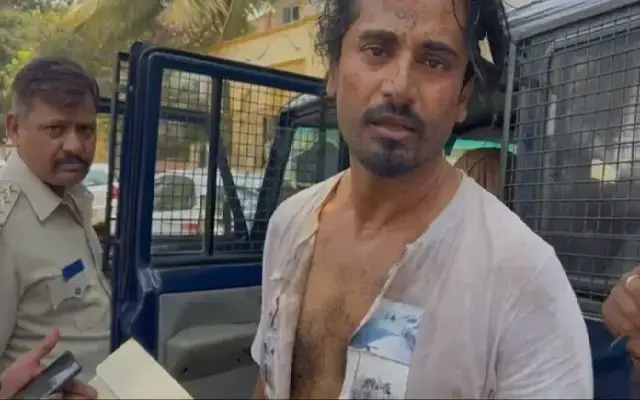A friendly cow all red and white,
I love with all my heart:
She gives me cream with all her might
To eat with my apple-tart. – – Robert Louis Stevenson,English poet and novelist.
With the patenting in the U.S. of a desi drug formulation composed of cow urine distillate and an antibiotic, the blessings of holy cow have opened a new vista. The traditional blessings of Khamadenu, as the cow was charecterised in Indian treatises, can partially counted as follows. Before the latest medicinal value was discovered and patented, gomutra, in its pristine state, was ascribed therapeutic value and one could see people drinking fresh gomutra using cupped palms as the cow discharged it. The distillate of gomutra is now sold across the counter under the brand name Khamadenu Ark.

The most important blessing of Khamadenu is milk and its downstream products– butter, ghee, ice-creams, and a variety of sweat-meats from the popular peda to Bengai specialities like rasagollas. Besides, its urine whose blessings are noted above, cow dung has variety of uses–fertiliser for plants, fuel for the kitchen, coating and disinfectant in the rural mud houses for the floors and walls. Through the gobar gas route cow dung also transforms into gas for fuel and lighting. By grazing in the forest, the cow keeps the grass in trim. Its hide is used for making bags, wallets and footwear. Even in death, the cow leaves behind its blessings. Dainty combs and decorative artifacts are fashioned out of its horns. Its carcass is used as fertilser by burying it at the base of fruit-bearing trees. Most important, the cow spawns calves, male and female. The females continue the cow`s good work while the males pull carts and get yoked for farming. Some males are also used for racing.
Beyond these obvious and intergral blessings bestowed by the cow, one can trace further derivatives. It provides employment. Cows invade the roads in towns and cities and hamper the safe movement of vehicular traffic. So, in cities like Delhi there are a dozen cow catchers whose job is to herd them into cattle pounds– where they are looked after by other civic employees. They are released on payment of fees and fines which go to the civic coffers. On highways such cows act as speed breakers and thus help in minimising accidents due to over-speeding.
There are mechanical cow catchers which are fixed to the front end of railway engines which just toss away the trespassing cows out of the track and life. A farmer collected such dead cow and went to the station master to demand compensation. The official opened a dusty railway manual and came with a counter demand for Rs.500 for allowing the cow to trespass on railway property. It was during the British raj when its servant`s decision was final. To appeal against it was considered foolish as pissing in the sand– there is nothing to show for it.
Cows provide salve to troubled souls. In towns and cities cows are tethered to trees or lamp posts outside temples. Ladies bring bundles of grass and sell it by the handful to devotees visiting the temple. It provides employment to the ladies selling the grass and the rich and troubled in soul gain merit. And the owner of the cow has his cow fed free. Such cows need not have the backdrop of a temple. In Mumbai, for instance, such cows are fed outside Parsee fire temples and even on busy footpaths of Colaba and Bhuleshwar.
Samuel Johnson noted that “A cow is a very good animal in the field; but we turn her out of the garden.” The latter chore taught me to run fast helped by the cows intruding into our ancestral farm to feast on standing paddy and vegetables. As a youngster, I was assigned to chase them away within the shortest time and to the farthest distance. Such cows have given me enough confidence to outrun my wife if ever she chased me with a rolling pin.
Cows were also my teachers for swimming. I had no opportunity to learn this art in a swimming pool under a trainer. We had to make do with stringed dry coconuts or dry tree trunks providing the ballast. These inanimate props did not facilitate movement. That is where the cow came in handy. I used to take the cows for a wash and drink, after grazing, to a large pond or talao which had a water surface of one acre when full. I would hold on to the cow’s tail as it swam across the pond. Unlike the buffalos which remain underwater for a long time, perhaps to shake you off its back or tail, the cows have smaller lungs and lesser capacity to stay submerged. In the years gone by I had many opportunities to swim in the pools of star hotels; but my grateful thoughts were always on the obliging cows.
Can the gentle cow kill a tiger? Yes, if the cow is dead and laced with poison. That is what villagers do when their cows are killed by tigers. After the kill, the tiger cannot finish off the whole carcass. So, it leaves the leftover carcass for its next meal. In the meanwhile the owner finds the cow missing and mounts a search. With little help from crows and vultures hovering over the dead cow, the farmer zeroes down on the spot. Unable to come to terms with his loss, he swears revenge and laces the carcass generously with concentrated insecticide. The next meal of the tiger turns out to be its last supper!
Sometimes that is not the end of the story. For instance, Silam (Sylvester uncle), who was man Friday in our ancestral home, found his cow killed by a tiger. To avenge his loss, he poisoned the half-eaten carcass. Next day, when we were returning from Sunday church service, we spied crows and vultures sweeping down on a small hillock. Going closer we discovered that it was a dead tiger with a bloated stomach. Silam went into a frenzy, and extolling the virtues of his dead cow, kicked the tiger on its stomach with all the fury he could muster. Suddenly, there was a growling sound as the accumulated gases in the tiger’s bloated stomach got released at its both ends. Silam got frightened and, declaring that the tiger was not dead, ran for his dear life till he reached the safety of his home. People later started teasing him of being afraid of a dead tiger’s fart.
That is Khamadenu for us!
Have you something to say on the subject? Go ahead!
About the Author
John B. Monteiro, author and journalist, is editor of his

website www.welcometoreason.com(Interactive Cerebral Challenger) offering a platform to discuss issues of current and abiding interest. His latest book, Corruption – India’s Painful Crawl to Lokpal, published in USA, can be ordered online from Amazon, Flipkart, etc. – and, in Mangalore, from Biblios and Gerosa.
For more details about him key in “John B. Monteiro” on Google search
Cocktail Plaza Archives :
Now A Peg In Pill! – Naturally alcohol-related!


















